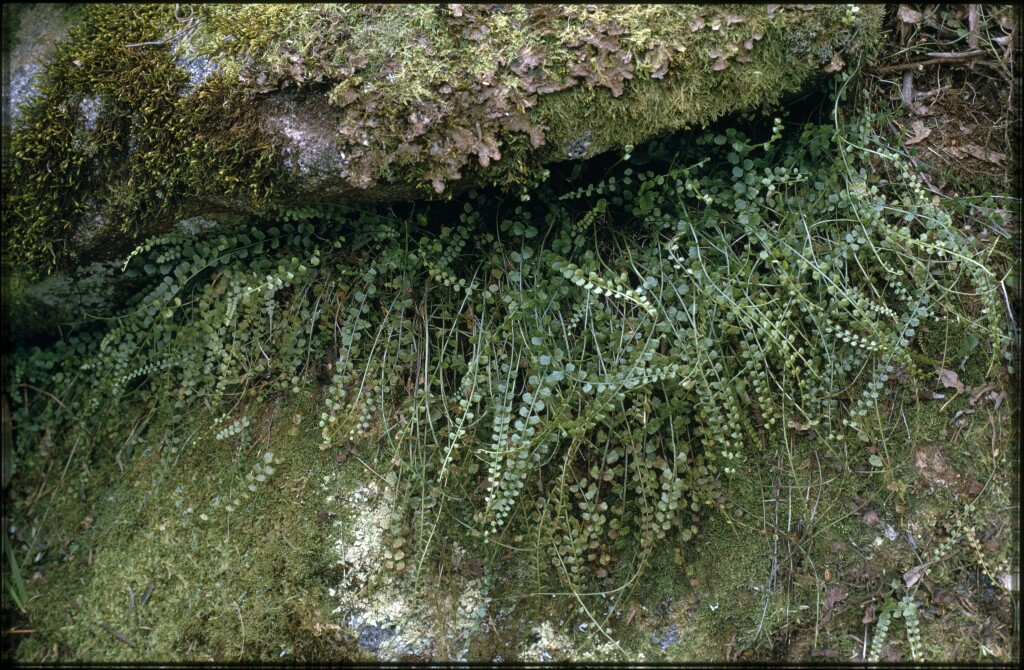Asplenium flabellifolium
Cav. Necklace FernRhizome short, covered with dark brown, shiny scales with long, fine tips. Fronds clustered, weak and trailing, 10–50 cm long; tip often without pinnae, sometimes taking root and producing plantlets (these usually preceded by a group of small dark scales). Stipe short, slender, green to light brown, flattened above with slight groove, with a tuft of scales at base, but none further up. Lamina once pinnate, linear to narrowly oblong, tapering towards tip, pale green, membranous; rachis slender, green, grooved with narrrow green wings, extending into long, bare tip. Pinnae shortly stalked, relatively distant, 6–20 pairs, usually fan-shaped, sometimes 3-lobed, larger towards base, 2–15 mm long; outer margin toothed; veins forking repeatedly, radiating. Sori linear-oblong, oblique to midvein, not reaching margin, occasionally confluent; indusium oblong, thin, with irregular margin, opening towards centre of pinna.
Wim, GleP, Brid, VVP, VRiv, GipP, OtP, WaP, Gold, CVU, GGr, DunT, NIS, EGL, EGU, WPro, HSF, HNF, OtR, Strz, MonT, HFE, VAlp. All States. New Zealand. Occurs in caves, under rock ledges, in crevices, on logs and tree trunks, on stream banks, or in rocks above cliffs or waterfalls. Such habitats can occur in a wide range of vegetation types, from dry woodland to rainforest. Able to rapidly colonize suitable sites by vegetative reproduction.
Entwisle, T.J. (1994). Ferns and allied plants (Psilophyta, Lycopodiophyta, Polypodiophyta). In: Walsh, N.G.; Entwisle, T.J., Flora of Victoria Vol. 2, Ferns and Allied Plants, Conifers and Monocotyledons, pp. 13–111. Inkata Press, Melbourne.
 Spinning
Spinning




